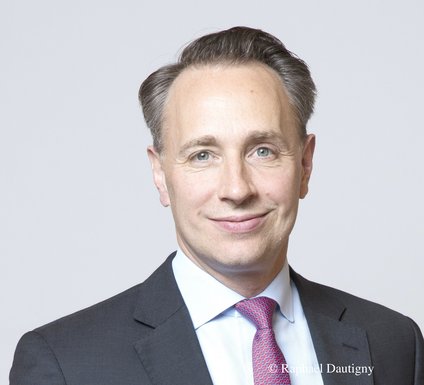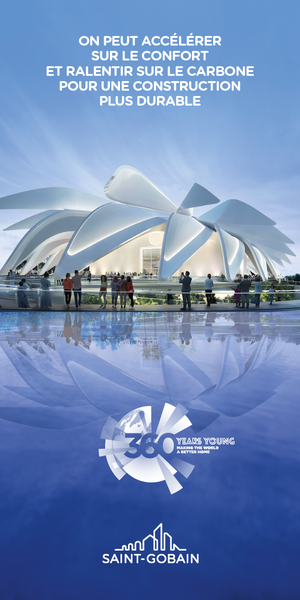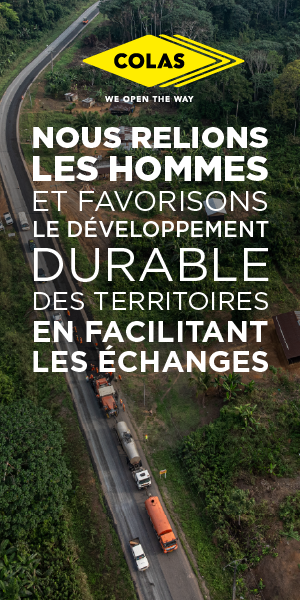

Politique Internationale — Never before have risks seemed so prevalent, whether on the level of the planet and its major issues, or on the level of society and the way it operates. What explains this phenomenon? Is it the price of modernity?
Thomas Buberl — It’s difficult to draw any definitive conclusions from the current period, because the context of polycrisis that we’ve been experiencing for the past few years continues to be so fluid. Furthermore, the perception of risk is not the same in all parts of the world, and can also depend on one’s position in the economy or society. That said, if we look at the long term, we can say that the notion of risk has become increasingly present over the last twenty years. What is special about our times in this respect? On the one hand, all these risks – some of which have been known for a long time, while others are more recent and emerging – are interconnected. Secondly, crisis sequences are following each other at an accelerated pace: in the past, a period of major crisis was often followed by a period of calm. Today, there is no longer the respite phase that allows people to recover and rebuild. Finally, the nature of risk has changed: we are now faced with systemic threats capable, as their name suggests, of shaking the entire system. Global warming, Covid and even cyber threats all fall into this category.
P. I. — You mention this interconnection of risks. Is it like a game of dominoes, where each piece upsets the arrangement of the next?
T. B. — Let’s look at geopolitical risk: it is now largely merged with the cyber threat. Take the climate crisis: we can’t dissociate it from the effects on public health that it may generate, or migration, with its potential geopolitical consequences. Ultimately, everything is linked. We can no longer, as in the past, content ourselves with simply segmenting the risks. If you’ll forgive the image, it’s like a jumper: as soon as you pull on one thread, the whole garment is weakened. This interconnectedness of risks does not, on the contrary, prevent us from taking a methodical approach to understanding and analysing them, so that we can deal with them more effectively. That’s why, as part of our Future Risks Report, a unique study that serves as a benchmark for all our stakeholders in that it provides an overview of the risks of tomorrow, we ask more than 20,000 people, including 3,000 experts in some fifty countries, each year to rank the risks in order of importance.
For some years now, climate risk has been at the top of the league table. This is to be expected, given what is at stake in the climate transition. Personally, I believe that social risk is the greatest threat to our societies. Not that we should underestimate the dangers of global warming, but in the face of this peril, many players – companies first and foremost – are taking action: solutions are emerging. On the other hand, the response to the risk of social fragmentation is less clear-cut. When a house is destroyed by a hurricane, beyond the human tragedy, we know how to rebuild it or even adapt it so that it is better protected in the future. If the fundamentals of our society have been undermined, we are less well equipped to respond. All the more so as this fragmentation carries within it the seeds of the polarisation of opinion that makes so many democracies around the world so fragile. So collectively we need to redouble our efforts to address this risk.
P. I. — Faced with this inflation of risks, and their sheer scale, is the mobilisation up to the task?
T. B. — I can answer this question based on what I know best, the company I run, AXA. Yes, we are constantly adapting to build the best responses to these threats. The proof: today, through the range of products and services that we are able to offer our customers, we are putting awareness of this new context of polycrisis, like prevention and adaptation, at the heart of our model. To take the case of climate risk, our AXA Climate structure employs more than 200 people, including around fifteen scientists, who are working to anticipate the consequences of global warming and to provide our customers with the most appropriate responses in terms of adaptation. With regard to the risk of social fragmentation, we are deploying a range of actions, both internally and externally, notably with our inclusive insurance offerings. But we believe that we need to mobilise as a group. That’s why we are also working closely with the public authorities. France is exemplary in its public-private partnerships in this area, the most significant example being the Catastrophe naturelle scheme, which enables the state and insurers to pool the cost of damage in the event of a major climatic event. Finally, policyholders also have a role to play. They are the ones on the front line. As such, their feedback is invaluable in enabling us to innovate and be ever more effective.
P. I. — In this context of constant exchange, who are your best contacts for assessing the current landscape? In the same vein, which key indicators do you rely on first and foremost?
T. B. — The two issues are closely linked. Our Future Risks Report is used by our risk management team to integrate perception of the dangers that surround us into risk assessment, and therefore into the proper conduct of our business. In addition to existing models on the market, at AXA we have our own risk modelling tools to build up a large network of data and information, which greatly benefits the customer experience. Artificial intelligence also enables us to speed up the processing of all this information. The large number of customer cases handled by our teams means that this database can be enriched in real time.
P. I. — Does this greater range of risks mean that you are more responsible than in the past?
T. B. — The image of insurance has changed. For a long time, we were seen primarily as a ‘payer’, intervening just at the time of the damage, with the sole task of reimbursing the financial cost of claims. This image, which is widely held in the collective imagination, belies the reality of what we do. Today, we are in the process of changing this perception. Insurers are now at the forefront of spotting the faint signals of tomorrow’s crises, whether economic, social and/or health-related; at the forefront, too, of understanding and reporting on changes in society by observing the behaviour of our customers; at the forefront, too, of contributing, in our rightful place, to the implementation of public policies for prevention and adaptation. At the heart of this complex environment, our responsibility becomes all the more important, to the point of transforming ourselves almost into our customers’ ‘partners’. As such, we play an economic role, of course, but also a social one.
P. I. — The current era is marked by the tremendous growth of artificial intelligence (AI). Is this a revolution for your business?
T. B. — AI is going to radically change our business. As an insurer, it’s important to know and be able to give early warning, whether it’s a question of anticipating a crisis in order to encourage people to adopt the right preventive behaviours, or of identifying a fundamental trend and thus initiating a dynamic of adaptation to the risks of tomorrow. Digital technologies in the broadest sense of the term are proving to be an invaluable aid in this respect: we are now capable of analysing vast quantities of data to derive lessons and insights. It’s not just theory; we’re putting it into practice and the results are already operational: for example, with a major agri-food producer, we had to think about the problem of drought. By analysing all the meteorological data we had at our disposal, we enabled our customer to adapt its planting cycle in order to preserve its economic equilibrium. Thanks to AI, we have a series of sensors – linked to farmland, its potential, production targets, market constraints, etc. – that enable us to project effectively into the near future. These two scenarios are just a tiny fraction of the applications we can develop for our customers. As you can see, the role of the insurer has changed.
P. I. — AI also means tremendous gains in terms of speed...
T. B. — A group like ours has a number of large industrial customers, who often have several plants around the world. Can you imagine the work involved in mapping all their facilities? Yet this task is essential if we are to measure any potential risks as closely as possible. Thanks to AI, we now have all the tools we need – satellites, 3D images, robots, etc. – to scan all our infrastructures, in a timeframe that is far beyond what was possible in the not-too-distant past. But speed isn’t everything: alongside the tools, AI is changing our processes. Here’s another example. Take a building: throughout its life, different teams of underwriters will come and go, at each stage, during major works – restoration, modernisation, etc. – when it is brought up to standard, during changes in occupancy… Each time, to adapt the risk assessment. Previously, all these reports, once used, were filed away and gathered dust on shelves in the basement. Now, thanks to AI, they can be analysed, so that the new underwriter doesn’t have to start from a blank sheet of paper, but can begin work with a level of risk that has already been established for the building in question. So they can protect it more effectively.
P. I. — In the long term, don’t you fear that AI could dangerously replace human intelligence, in the sense that man would no longer have control over the machine? With the risk, in particular in the insurance industry, of the strict application of models acting as an intangible decision-making circuit?
T. B. — Certainly not. AI obviously makes it possible to automate tasks. On the other hand, the ability to assess situations remains human. Too many strategic elements come into play: I cite as proof the culture of prevention that is developing more and more for many risks. It’s not the machine that instituted it, but mankind. And the two complement each other: as automation progresses, it frees up time for our employees to perform tasks that can only be done by them, starting with human contact. Our call centres are a good example of this: our policyholders need this contact.
P. I. — The scale of the challenges is clear: the emergence of new risks, the need to adapt to new technologies, the war for talent, a controlled financial trajectory... What is the most appropriate approach for an insurer? Should we think on a global scale, or more in terms of local actions?
T. B. — Our thinking is not based on an opposition between the global and the local. The two approaches are complementary and we are developing them together. Some projects require a global approach, because you need the critical mass to deploy them. AI falls into this category: the investment required is such that we will favour a general framework. But at the same time, a number of projects can only be effective if they are carried out at a local level. As a general rule, we always try to tailor our projects to the needs of our customers, by combining the two dimensions.
P. I. — How are your teams dealing with all these issues? In terms of recruitment, is the emergence of new challenges turning you towards profiles that you weren’t used to targeting?
T. B. — AXA is fortunate to be able to draw on a wide range of profiles. That’s one of our strengths. Our insurance business increasingly requires us to have different professions with very specific skills. By definition, like any sector undergoing change, we attract new profiles, and we’re delighted about that. This is possible because, at AXA, employees are not judged in the light of their original academic background – at least, your university course and your degree are not a foundation that will determine your entire career. What interests us first and foremost is commitment, team spirit, interest in our business and, above all, the human qualities that help us to build a community.
P. I. — The insurance industry has been undergoing a major consolidation for some time now. Does this mean that all the big groups end up looking the same, based on the same pillars?
T. B. — On the contrary, I believe that AXA is truly unique. First of all, in 2016, following a review of our assets, we made the decision to focus on very specific geographic markets: we gave priority to areas where we were already well established and where we could be among the top five in the market. We have therefore refocused our positions, without impacting our volume of business. Secondly, we have made strategic choices that have paid off: with the acquisition of AXA XL, we are now the first insurer for large corporate risks; we are developing a whole business around health, which makes us a market leader. Finally, we are continuing to refocus on our core business of managing technical risks and savings, so that we are less exposed to fluctuations in the financial markets.
P. I. — The current state of the planet and the associated risks are hardly cause for optimism, to say the least. What would lead you to take an encouraging view of the insurance sector? That could almost be a conclusion...
T. B. — At AXA, we’re convinced that future shouldn’t be a risk! But for that to happen, we need to encourage everyone to play their part in preventing risks and adapting to the threats of tomorrow. We support our policyholders in this by giving them the means to face the future as calmly as possible. This is also a prerequisite for insurability, and therefore for the sustainability and relevance of our business over the long term. It is because this challenge is both immense and exciting that our sector has never been so active and innovative.




















